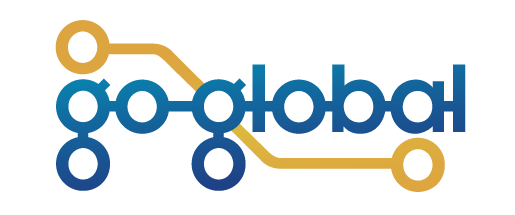Budgeting isn’t rocket science, it’s just not easy. It is all behavior, self-control.
~ Andrew Dodd, Go Global “Finance Guy”
For many individuals and families money is not a common topic of conversation. When it is, it is all too often uncomfortable, a topic to be avoided at all cost (pun intended). The good news if this resonates with you is that you are not alone. We too have experienced traveling on a budget, and the struggle to save money. The great news is this – you can travel on any income if you are determined. The idea will move from if to when which is way more exciting and motivating.
If what I said has not given you hope and you are still skeptical, I want to tell you a little bit about my journey with money. As my husband “the finance guy” would tell you, I am the opposite of fiscally minded. I experience catharsis when shopping, even if it is at the dollar store. While I do not know why this is true, I can tell you it very much is. I started my financial journey making statements like, “you can’t save what you don’t have.” So you might imagine the discussions my accountant husband and I have had throughout our relationship. It has been worth every second though, because I have been converted. We paid for a double trip to Italy while also paying for a family vacation stateside in the same year. This year we will pay for a trip for my mom and I while also purchasing a new car (and paying it off). I sit here shaking my head, but it is all true. I never thought I would get to this point, but Andrew has helped lead the way and I want to share with you what he has taught me so you too can achieve financial comfort and experience the joys of traveling (without debt!)
Step 1: Learn your Monthly Income and Expenses
Your income and monthly expenses are unique to you. Take some time, do not rush yourself, and write out your expenses. If you have multiple jobs then list out your income as well. Be careful not to forget any expenses, and ensure you account for deductions from your pay when considering what money you count as income. Expenses will include but may not be limited to: bills, debt payments, subscriptions, utilities, insurance, memberships, food, property taxes, car tags/registration, medical services, medication costs, monthly savings, eating out funds, car maintenance, and housing. If you are worried about missing expenses it can be helpful to review prior months bank statements (up to the last year). Also consider double checking accounts, subscriptions, memberships, or any expenses which may change yearly or be inconsistent. Plan ahead for once a year occasions such as Christmas shopping and birthdays.
Step 2: Determine your discretionary income
Once you feel confident you know your monthly income and expenses it is time to do some basic math. Use this formula income – expenses = discretionary income. This discretionary income (disposable income) is money which currently is not being used, and is excess or what you can utilize to start saving. For instance if you receive two paychecks a month for $1285, and your bills/expenses cost you $2302 monthly you would take $1285 (your take home) x 2 (two paychecks), which equals $2570 and subtract $2302 from it. This would leave you with $268 which does not have a “job.”
$2570 – 2302 = $268.00
income – expenses = discretionary income
We know it is very exciting to plan a trip, and even more exciting to go on one, but we strongly encourage you to start saving by setting some money aside for emergencies. If something comes up while you are putting all of your savings towards a trip it is easy to get defeated when you find out your daily driver needs 4 new tires and you have to full stop with putting money towards a trip. Filling an emergency fund first will provide you peace of mind, and allow you to handle the bumps in the road while continuing to put money towards your trip once you start saving for it. Additionally, if you choose to book a trip before having the full amount saved you will be on a timeline for when the full amount is required and this would mean less time to get back on track after an emergency. Even if you are not sure about taking a trip, we encourage you strongly to begin an emergency savings fund.
Andrew and I use a budgeting app to help us stay on the same page and ensure we are making progress towards our mutual goals. If an app on your phone is helpful to you, then do it. If you are drawn to paper and pen or this method helps you understand numbers better, use it. Remember, there is no wrong way to do these steps. What is important is that you know your finances so you can stay in control.
Step 3: Reduce Expenses or Increase Income
People often become dejected after step 2, feeling there is no way they will ever travel with the amount of discretionary income they have between. However, I urge you not to stop there. Remember these steps are meant to allow you to take control of your finances so you can achieve more goals than paying the bills. One of the ways you can take control is to review the expenses you outlined previously, and then determine what reductions you can make. For instance, in today’s world many homes subscribe to multiple entertainment packages. It may be time to review long standing contracts you have with your phone, tv, or other media company. Another quick way to reduce expenses is to stop something even by one time a week. An example of this would be limiting yourself to eating out no more than 2 times a week when you normally eat out 3-4 times a week. There are many ways to reduce expenses, again, do what works for you. Consider carpooling to work or extracurricular events, work from home (if allowed) to save gas money, or buy non-perishable foods in bulk.
If you review your expenses and find you really are skimming to get by as is fear not, there is yet another option. Consider adding income. This may mean finding a better job, picking up a part-time job, and/or advocating for a raise. You could also consider trimming down your belongings. Go through all of your belongings and determine how much you may not use or are ready to part with. Then have a garage sale, or consider selling your items to stores which will purchase them (bookstores for books, etc.) While I think there were many sites for selling used items prior to COVID it seems COVID has really boosted these avenues of profit. There are many where you can post for free without which is good when you are trying to make money. One example to consider would be facebook marketplace. Personally though, the first option (reducing expenses) is easier and more controllable.
Step 4: Save and Plan
It does not matter which path you choose in step 3, you should review your income and expenses again after you have taken any of the aforementioned actions. This will give you a new discretionary income, and allow you to then calculate how many months it will take you to save for a trip. From the discretionary income you have, determine how much you are willing to commit to savings each month for your trip. Remember, if you do not yet have any money saved up, you should set aside funds for an emergency before saving for a trip. If you already have emergency funds, then start putting money aside for your trip. Consider saving for a few months to see how it goes and to ensure you are able to remain committed to the goal before you complete an application or start making any concrete travel plans. You can start looking at different trips and garnering an understanding of what your options cost. This is also a good time to start becoming aware of different dates which are offered.
Step 5: Choose a Trip and a Date
Once you have saved for a few months you will have a fairly solid idea of how much you are able to put aside financially each month (we’ll call this MCS or monthly committed savings) and you should have funds for a deposit/application. It is now time to look at the cost of trips, and again (unfortunately) do some more math. In this step you need to determine how many months it will take you to completely pay for a trip. This is important because you need to be able to finish paying for your trip at least 60 days before departure. This will make sure your account is in good standing with the company, but also give you two months before departure to commit funds for spending while on your trip (for all the “pretty” things/souvenirs). Use the formula below to figure out how soon you can travel.
(Cost of trip / MCS) = #months …… then + 2 months
($2,875.00 + Airfare) / $300 = # of months … +2
NOTE: If you are not familiar with how much airfare may cost, give us a call and we will help you.
($2,875.00 + 1200) / $300 = # of months … +2
$4075 / $300 = 13.58(round up)
Once we add 2 months, we have 16 months.
To simplify this equation: if you are able to save $300 a month, and the total trip cost (airfare + trip) is $4075, it will take you 16 months to pay for your trip. Fear not – we plan that far out! You can look at 2022 trips now! To take this a step further, if you start saving money in May 2021 and your finances match the above numbers you would be able to pay for a trip which cost $4075 and would occur in September 2022 (check out City Break: Paris). Theoretically, you would make your final payment before the end of July and then be able to save money for spending during July and August.
Perhaps you already have a trip in mind, then what you may ask. Well allow me to help with that formula as well. Your planning would look something like the below statement.
Cost of trip* / (# of months until chosen trip departure minus 2) = savings/per month required
$2975 / 15 = $199 per month
In other words, if you would like to join us for our trip to Paris in September 2022, you need to save about $200 a month in order to be able to make your final payment 60 days prior in July of 2022. Play around with the math (I know, something you never thought you would do, but do it) and see when your dreams can come through.
Step 6: Pay for the Trip
The final step does not require much explanation, but will feel like pomp and circumstance when you send your final payment, and have your plane ticket booked with your calendar marked. Your adventure will be right around the corner. Don’t wait, start planning now, and your trip will be here sooner than you think (trust me, when you start long term planning, things seem to approach much faster).
Disclaimer: The same plan does not work for everyone. What is important is learning about your situation and how you can take control of your finances to make them work for you. What we will say is debt is not wise, and often compounds into an uncontrollable mess, so we recommend you avoid placing any bills related to your travel on credit cards or taking out any loans for the purchase of voluntary travel.
*Don’t forget to include airfare. This example cost is from City Break: Paris, airfare is estimated. Some numbers are rounded up.


